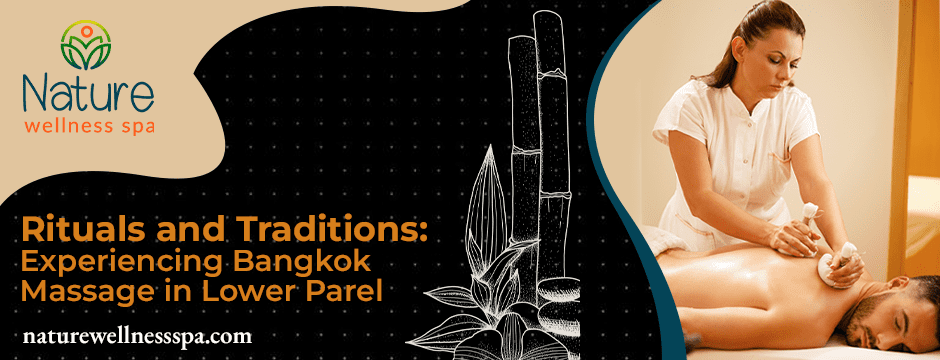In the bustling metropolis of Bangkok, massage isn’t just a therapeutic treatment—it’s a cultural experience deeply rooted in tradition and history. As visitors wander through the vibrant streets of this dynamic city, they’ll encounter an array of massage parlors offering a glimpse into Thailand’s rich heritage of healing arts. From ancient techniques passed down through generations to modern innovations, Bangkok’s massage rituals and traditions offer a fascinating journey into the heart of Thai culture.
The Origins of Thai Massage:
Thai massage, or “nuad paen boran” in the local language, boasts a rich history that spans thousands of years. It traces its roots to the ancient healing traditions of Ayurveda, the traditional medicine system of India, and traditional Chinese medicine. This unique form of massage therapy seamlessly blends elements of acupressure, stretching, and yoga-like movements to provide a holistic approach to healing and well-being.
The Role of Spirituality:
In Thai culture, massage is more than just a physical therapy—it is deeply intertwined with spirituality and Buddhist philosophy. Central to this belief is the concept of energy lines, known as “sen,” that are believed to run throughout the body. According to Thai tradition, these energy lines are conduits for the flow of life force, or “prana,” and any blockages or imbalances along these lines can lead to physical or emotional discomfort.
Thai massage aims to restore balance and harmony to the body by applying pressure to specific points along these energy lines. By doing so, practitioners seek to remove blockages, stimulate the flow of energy, and promote overall well-being. It is not uncommon for Thai massage sessions to begin with a prayer or meditation, during which practitioners invoke blessings for healing and harmony.
Furthermore, Thai massage is often practiced in temples by Buddhist monks as a form of spiritual healing. This ancient tradition emphasizes the interconnectedness of mind, body, and spirit, and seeks to promote not only physical health but also emotional and spiritual well-being.
Traditional Techniques:
One of the hallmarks of Thai massage is its incorporation of stretching and passive yoga-like movements. During a traditional Thai massage session, skilled practitioners utilize their hands, elbows, knees, and feet to apply pressure to various parts of the body while guiding clients through a series of stretches and postures. These movements are meticulously designed to target specific muscle groups, release tension, enhance flexibility, and induce a profound sense of relaxation. By combining gentle pressure with dynamic stretching, Thai massage offers a holistic approach to healing and rejuvenation, addressing both physical and mental well-being.
Herbal Compress Therapy:
Herbal compress therapy, known as “luk pra kob” in Thai, is another ancient healing practice deeply rooted in Thai massage tradition. This therapeutic technique involves the use of a heated herbal compress, typically filled with a blend of aromatic herbs and spices chosen for their healing properties. The warm compress is gently pressed and massaged onto the body, allowing the therapeutic oils and natural essences to penetrate deeply into the skin and muscles. Herbal compress therapy is believed to possess detoxifying, anti-inflammatory, and pain-relieving properties, making it an effective treatment for relieving muscular aches and pains, reducing inflammation, and promoting overall relaxation and well-being.
Modern Innovations:
While traditional Thai massage techniques serve as the foundation of Bangkok’s massage culture, the industry has evolved to embrace modern innovations catering to diverse client needs. Today, visitors to Bangkok have access to a wide array of massage styles and treatments, ranging from traditional to contemporary. Aromatherapy massage, hot stone massage, and Swedish massage are just a few examples of the modern techniques available, each offering unique therapeutic benefits.
Spas and wellness centers in Bangkok have embraced these modern innovations, offering luxurious amenities and personalized experiences to enhance the overall massage experience. From tranquil spa environments to state-of-the-art facilities, guests can expect a blend of traditional techniques and modern comforts for a truly indulgent retreat.
Experiencing Bangkok Massage in Lower Parel:
At Nature Wellness Spa in Lower Parel, guests have the opportunity to immerse themselves in the rich traditions of Bangkok massage while enjoying the serene ambiance of our luxurious spa. Our skilled therapists are trained in traditional Thai massage techniques, ensuring an authentic and transformative experience for every guest. Whether seeking relief from muscular tension, stress, or simply desiring to relax and unwind, our Bangkok massage rituals and traditions offer a holistic approach to healing and rejuvenation.
From the moment guests step into our spa, they are enveloped in a sense of tranquility and relaxation, allowing them to escape the hustle and bustle of everyday life and embark on a journey of self-discovery and renewal. With a focus on personalized care and attention to detail, we strive to provide an unforgettable experience that nourishes the body, mind, and soul.
Conclusion:
In Bangkok, massage is more than just a physical therapy—it’s a cultural institution deeply ingrained in the fabric of daily life. From ancient traditions to modern innovations, Bangkok’s massage rituals and traditions offer a fascinating window into the soul of Thai culture. Whether you’re a seasoned traveler or a first-time visitor, experiencing Bangkok Massage in Lower Parel is a journey of discovery, relaxation, and cultural immersion that will leave you feeling refreshed, rejuvenated, and inspired.

